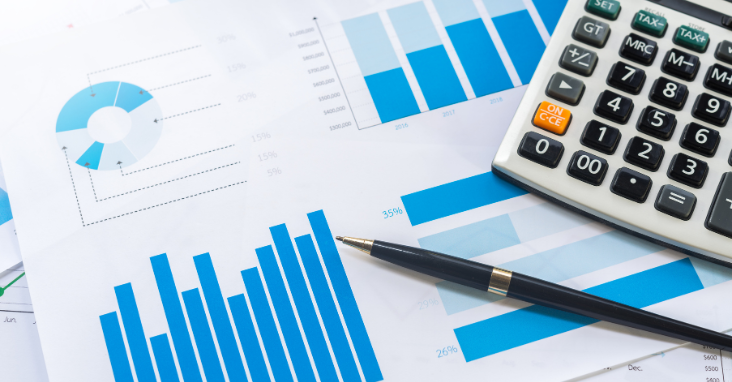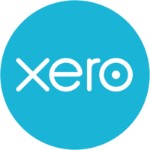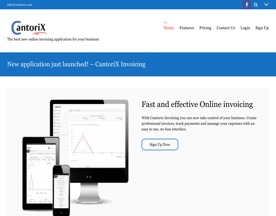Hey there! You’ve probably heard the term ‘variable cost per unit’ thrown around in business meetings or in your economics class. But, what does it really mean? And why should you, as a business person or a curious learner, care about it? Don’t worry, we’ve got you covered! In this blog post, we’re going to dive into the world of variable costs and see how this nifty little concept can make a world of difference in the way you run your business or understand your finances. So grab your calculator and your curiosity and let’s jump right in!
Understanding Variable Cost Per Unit
Okay, let’s set the stage first. Imagine you’re running a bakery. You’re up before dawn, you’ve got flour in your hair and you’re whipping up batches of delicious pastries for your customers. But, as you probably know, those pastries don’t just magically appear (although wouldn’t that be great!). You’ve got ingredients to buy, ovens to power up, and maybe even some helpers to pay.
These costs that change depending on how many pastries you make are what we call variable costs. And when we talk about variable cost per unit, we’re looking at how much it costs you to make just one of those tasty treats.
Still with us? Great!
Next, we’re going to dive into the formula for variable cost per unit, how to calculate it, and why it’s a key piece in your business puzzle. We promise, it’s not as scary as it sounds and the payoff is well worth it. Ready? Let’s roll up our sleeves and dive in.
The variable cost per unit refers to the expenses incurred for producing one unit of a product or service that vary based on the level of production. It includes costs such as direct materials, labor, and utilities.
Action Item: Take a minute right now to think about your own business or a hypothetical one. What are some variable costs you might have? Jot them down, and as we go through the next sections, try applying what you learn to your own situation. See you in the next section!

What is the Formula for Variable Cost Per Unit?
Time to dive in head first! The formula for calculate total variable cost, per unit is surprisingly simple. It’s just the total variable cost divided by the total number of units produced. That’s it! See, not so scary, right?
So let’s go back to our bakery example. Suppose you’re making croissants and your total variable cost (the cost of the ingredients, the power for the oven, the wages of your helpers) for a month is $2,000. If you baked 1,000 croissants in that month, then your total variable cost formula for per unit would be $2,000 divided by 1,000, which is $2. So it costs you $2 to make each croissant.
How do I calculate Variable Cost Per Unit?
Now that we’ve got our variable cost formula down, let’s talk about how to actually calculate this. First, you’ll need to know your total variable costs. This might take some legwork if you’re not used to tracking your costs, but it’s a crucial step.
Once you’ve got that, you’ll need to know the total number of units you’ve produced. This might be easier if you’re in manufacturing, where each product is a unit, but if you’re in a service business, you might have to get creative about defining what a “unit” is.
Then it’s just a matter of plugging these numbers into our formula, doing a quick division, and voila! You’ve got your average variable cost formula per unit.
Action Item: Try calculating your variable cost per unit now with the costs and units you thought of earlier. If you’re finding it difficult to pin down your costs, don’t worry. As we progress, we’ll discuss ways to track variable costs more effectively. On to the next section!

Why is Variable Cost Per Unit Important?
Alright, so now you can calculate total variable costs and variable cost per unit. Great job! But why is this important? What can this number tell us? A lot, as it turns out.
First off, knowing your variable cost per unit can help you set prices. Going back to our bakery, if you know each croissant costs $2 to make, you’d need to price it above $2 to make a profit.
Secondly, it can help you make production decisions. If the cost to produce an additional unit is lower than the price you can sell it for, it makes sense to increase production.
Finally, understanding your average variable cost per unit can give you insight into the efficiency of your operation. If you notice your variable costs rising, it might be time to look into ways to improve efficiency.
So, the variable cost per unit is not just a number, it’s a powerful tool in your business decision-making toolkit.
Action Item: With your variable cost per unit in mind, think about your pricing and production decisions. Are there changes you could make for better profit? Keep these thoughts handy as we delve deeper into the implications of variable costs in the upcoming sections.

What are Some Examples of Variable Costs?
What are Some Examples of Variable Costs?
Okay, so we know that variable costs fluctuate with the level of production. But what does this look like in various industries? Let’s break it down with more examples:
1. Manufacturing: This industry is filled with variable costs. If you’re producing cars, variable costs could include the steel for the car bodies, the fabric for the seats, the rubber for the tires, and the wages for the assembly line workers.
2. Retail: In a clothing store, for instance, the cost of the clothes that you buy from suppliers is a variable cost. So are the various shipping costs and fees to get those clothes from the supplier to your store. If you hire extra part-time staff during peak seasons, those wages would also be a variable cost.
3. Service industry: Say you run a lawn care service. The gasoline for your lawnmowers and vehicles, the cost of grass seed or fertilizer, and the wages of part-time staff who only work during the busy season are all variable costs.
4. Restaurants: In a restaurant, variable costs include the food ingredients, the beverages, the supplies (like napkins and straws), and the wages of part-time staff.
5. Software and tech companies: Even digital businesses have variable costs. For a streaming service, the cost of bandwidth goes up as more users watch shows. The cost of licensing content may also be a variable cost if you pay based on viewership.
As you can see, variable costs are everywhere! But don’t worry, we’ve got tools and techniques to manage them. Stay tuned!
Action Item: Do a deep dive into your own business or the hypothetical one we’ve been exploring. Are there more variable costs that you haven’t considered before? Add them to your list. As we journey further, we’ll see how these can impact your overall cost structure.

What are Some Factors that Can Affect Variable Costs?
Here’s where things get interesting calculate variable costs. Variable costs can change due to a variety of factors. Understanding these can help you better predict and manage your costs. Here are some key factors:
1. Scale of production: As you get production equipment to produce more, you’ll naturally incur more variable costs since these costs are tied to each unit of production.
2. Changes in prices: If the price of your raw materials or labor rates go up, your average variable costs per unit will also increase.
3. Efficiency improvements: If you find a way to produce your goods or services more efficiently, you may be able to reduce your variable costs. For instance, finding a cheaper supplier or reducing waste in your production process.
4. Seasonal fluctuations: Some businesses have more variable expenses or costs that change depending on the time of year. For instance, a ski resort will have higher variable costs in the winter when it’s open versus the summer when it’s closed.
5. Technological advancements: New technologies can often reduce variable costs by automating processes or making them more efficient.
Remember, the key to managing variable costs is understanding them. So don’t be afraid to dive into the details!
Action Item: Reflect on these factors. How might each of them affect your variable costs? Are there any potential changes on the horizon that could impact your variable costs, such as price changes or seasonal fluctuations? Make note of these, as they’ll help you forecast and manage your costs in the future.

How Can I Reduce Variable Costs?
We’ve touched on why variable costs are important and the factors that can affect them. Now, let’s delve into how you can actually reduce these costs. Here are some strategies to consider:
1. Improve operational efficiency: This could involve streamlining your production processes, reducing waste, or improving training to increase worker productivity.
2. Negotiate with suppliers: If you can negotiate lower prices for your materials or services from suppliers, this can directly reduce your variable costs.
3. Use technology: Consider investing in technologies that can make your processes more efficient, such as automation or machine learning algorithms.
4. Bulk purchasing: Sometimes, buying in bulk can help reduce the per-unit cost of your materials, although you’ll have to balance this with the risk of having excess inventory.
5. Outsourcing: In some cases, it might be cheaper to outsource certain tasks to a third party rather than doing them in-house.
Remember, the goal isn’t just to cut costs indiscriminately, but to do so in a way that still allows you to deliver a quality product or service to your customers.
Action Item: Take a look at your operations. Where might there be opportunities to reduce variable costs? Are there processes that could be streamlined? Suppliers who might be open to negotiation? Potential areas for technological investment? Make a list of potential cost reduction strategies to explore further.

What is the Difference Between Variable Cost and Fixed Cost?
Now that we’ve got a good handle on variable costs, let’s bring fixed costs into the picture. Understanding the difference between the two is fundamental to understanding your business costs.
Variable costs, as common variable costs we’ve discussed, are costs that change with your level of production. More production leads to higher costs and vice versa.
On the other hand, fixed costs are costs that don’t change with the level of production. Whether you produce one unit or one thousand units, these costs stay the same. Examples include rent for your office space, salaries for your full-time staff, and insurance payments.
You can think of variable, unlike fixed costs, as being flexible – they move up and down based on your business activities. Fixed costs, however, are rigid – they’re the same no matter what you do. Both are important to consider when planning your business budget.
Action Item: Try to identify some of the fixed costs in your business or in our bakery scenario. How do these fixed costs interact with the variable costs you’ve already identified? Understanding this interaction is a key part of business financial planning, which we’ll explore further in future sections.

What is the Difference Between Direct Cost and Indirect Cost?
As we continue to dive into the world of business costs, it’s time to introduce two more important terms: direct costs and indirect costs.
Direct costs are costs that can be directly linked to the production of specific goods or services. This includes most variable costs like raw materials or direct labor. For example, the flour, butter, and part-time baker’s wages at our bakery would be direct costs because they’re directly tied to the production of croissants.
On the other hand, indirect costs can’t be directly linked to the production of specific goods or services. They’re necessary for the business to function but aren’t tied to a specific product. Examples of indirect costs include rent, utilities, and full-time salaries not tied to production. These are often fixed costs.
So while direct costs often vary with production, indirect packaging and shipping costs are usually consistent. But remember, both are crucial for running your business.
Action Item: Take a moment to distinguish between the direct and indirect costs in your business. How do these concepts overlap with the variable and fixed costs you’ve identified earlier? This understanding is essential as it forms the basis for cost accounting, a crucial tool for effective business management.
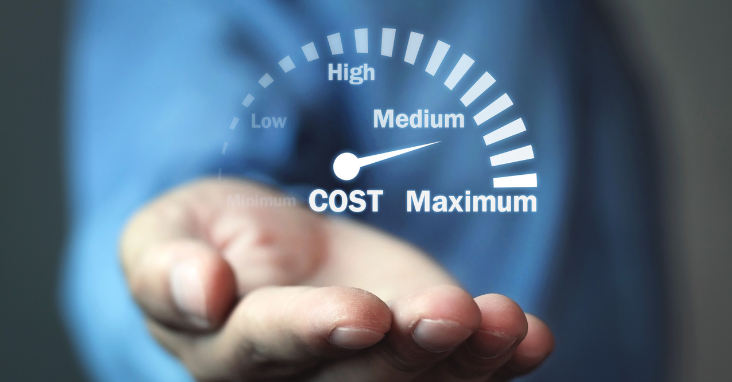
What is the Difference Between Prime Cost and Conversion Cost?
To deepen our understanding of cost concepts, let’s introduce two more terms: prime cost and conversion cost. These terms are often used in the manufacturing industry but are also applicable to other business types.
Prime cost refers to the total of all direct costs associated with production. This includes raw materials and direct labor. In our bakery example, the cost of flour and the hourly wages of bakers would both contribute to the prime cost.
Conversion cost, on the other hand, is the cost incurred to convert raw materials into a finished product. It includes direct labor and manufacturing overhead costs incurred, but not the cost of raw materials. So, in the bakery scenario, the baker’s wages could be considered a conversion cost (as it’s part of turning flour into croissants), but the cost of the flour itself would not.
In a nutshell, prime costs capture all direct production costs, while conversion costs focus on the transformation process from raw material to finished product. Understanding these costs is crucial for pricing decisions and profitability analysis.
Action Item: Try to compute the prime and conversion costs in your business or our bakery example. What components make up these costs? Understanding how these costs are broken down can provide valuable insights into where most of your production costs are coming from, which in turn can guide cost reduction and pricing strategies.

What is the Difference Between Total Cost and Unit Cost?
As we continue to unravel the intricacies of costs, let’s discuss the difference between total cost and unit cost. These two terms offer distinct but equally important views of your business’s expenses.
Total cost is the sum of all your fixed and variable costs for a given period or level of production. It represents the total amount you’ve spent to produce a certain number of goods or services. This includes everything from the cost of raw materials to the rent for your business premises.
Unit cost, on the other hand, breaks down the total cost per item produced. It’s calculated by dividing the total cost by the number of units produced. The unit cost gives you an idea of how much it costs to produce one unit of your product or service.
So, while total cost gives you an overall view of your expenses, unit cost helps you understand the cost of producing each individual item. Both perspectives are crucial for effective cost management and pricing strategies.
Action Item: Consider the total cost and unit cost in your own business or in our bakery scenario. How does understanding both these costs help in financial planning and decision making? Making sense of these costs will allow you to price your products appropriately and identify areas for cost reduction.
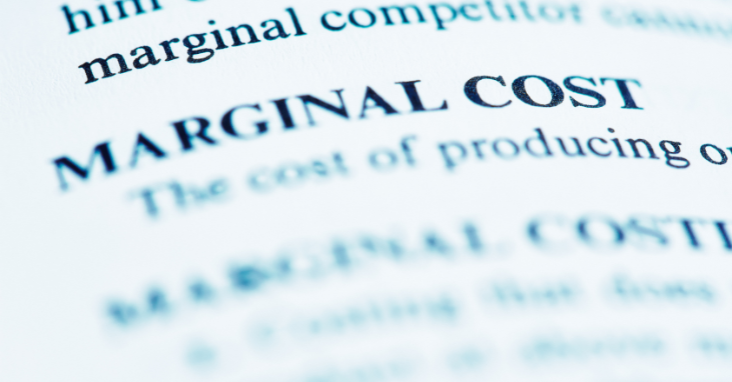
What is the Difference Between Marginal Cost and Average Cost?
In the world of cost accounting, the terms marginal cost and average cost are frequently used. Understanding the difference between these two can be critical to your business strategy.
Marginal cost is the cost of producing one additional unit of a product. In practical terms, it’s the change in the total cost that comes from making or producing one additional item. It’s a key concept in economics and decision making because it can help you determine the optimal level of output x variable cost of production.
On the other hand, average cost is simply the total cost divided by the number of units produced. It gives you an idea of the cost per each unit produced on average. It’s useful in determining the minimum selling price to break even.
In summary, marginal cost tells you the cost of producing one more unit, while average cost tells you the overall cost per unit. Understanding both can give you a more complete picture of your cost structure.
Action Item: Think about the concepts of marginal and average cost in the context of your business or our bakery scenario. Can you calculate these costs? How might they inform your decisions about production levels and pricing? Knowledge of these cost concepts can help optimize your business operations and profitability.

What is the Difference Between Variable Cost and Contribution Margin?
Now, let’s take a closer look at variable cost and how it interacts with another crucial concept in business finance: contribution margin.
We’ve learned that variable cost is the cost that varies with the level of production output. It’s tied directly to the production and can increase or decrease depending on how many units of goods or services are produced.
On the other side, the contribution margin is a product’s price minus all associated variable costs, giving the “contribution” each unit makes towards covering fixed costs and then towards profit. In other words, it represents how much each unit sold contributes to fixed costs and profit after covering its variable costs.
So, while variable costs represent what you must spend to produce each additional unit, the contribution margin shows how much each unit contributes to covering fixed costs and profit. Understanding the relationship between these two is key for pricing, profitability analysis, and decision making.
Action Item: Consider your variable costs and how they affect the contribution margin in your business. Could adjusting prices or reducing variable costs increase your contribution margin? Reflect on how understanding this balance could influence your pricing and production decisions. This understanding can help ensure that each unit sold is contributing enough to cover costs and generate a profit.

What is the Difference Between Break-Even Point and Profit Margin?
In the realm of cost accounting and financial analysis, understanding the concepts of break-even point and profit margin can be incredibly beneficial.
The break-even point is the point at which total revenue equals total costs. At this point, you’re not making a profit, but you’re not incurring a loss either. It’s the minimum amount of units you need to sell or the minimum price at which you need to sell to cover all your sales commissions and your costs.
On the other hand, profit margin is a measure of profitability. It’s calculated by subtracting total costs from total revenue and then dividing by total revenue, usually expressed as a percentage. It shows what portion of your sales is made up of profit.
So while the break-even point gives you the minimum target to cover your costs, the profit margin tells you how much of your sales turn into profit. Both are crucial metrics when it comes to making strategic business decisions about pricing, production, and growth.
Action Item: Think about the break-even point and profit margin in your own business or our bakery scenario. What might your break-even point be? What about your profit margin? Understanding these key financial metrics can provide you with a roadmap to business profitability and success.

How Can I Use Variable Cost Per Unit to Make Pricing Decisions?
Understanding your variable cost per unit is an essential part of making informed pricing decisions. It serves as the foundation for determining how much you need to charge to cover your costs and generate a profit.
When setting your price, you need to ensure that it’s higher than your variable cost per unit. The difference between the price and the variable cost per unit is your contribution margin, which needs to cover your fixed costs and contribute to your profit.
However, pricing is not just about covering costs and making a profit. You also need to consider market conditions, what your customers are willing to pay, and how your competitors are pricing similar products or services.
Action Item: Look at your current pricing strategy. Does it cover your variable cost per unit and leave room for contribution towards fixed costs and profit? If not, you may need to reconsider your pricing. But remember, don’t just focus on costs; consider also your market, customers, and competitors. With the right balance, you’ll achieve a price that maximizes your profits while still being competitive and affordable for your customers.

How Can I Use Variable Cost Per Unit to Make Production Decisions?
Variable cost per unit plays a significant role in making production decisions. By understanding this, you can determine the cost implications of increasing or decreasing your production levels.
The decision to increase production should ideally lead to a decrease in the variable cost per unit due to economies of scale. However, this isn’t always the case. You must consider the capacity of your operations and the potential for costs to rise due to overtime pay or overuse of resources.
Conversely, reducing production could lead to an increase in variable cost per unit due to diseconomies of scale. However, it could also help you avoid waste and inefficiencies.
Action Item: Reflect on your current level of production. Is there room for adjustment? What would be the impact on your variable cost per unit and overall profitability? Remember, finding the optimal level of production is a balancing act. It requires you to consider not only costs but also demand, capacity, and efficiency. Strive to find the sweet spot where you maximize profits while minimizing costs.
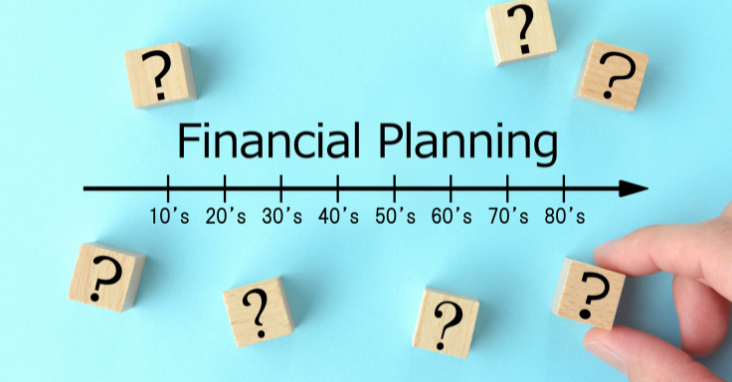
How Can I Use Variable Cost Per Unit to Make Financial Planning Decisions?
Variable cost per unit is an important component of financial planning. It plays a key role in budgeting, forecasting, and assessing business performance.
For example, by projecting your variable cost per unit, you can forecast your total costs based on estimated production volumes. This can guide budgeting decisions and help you plan for the financial resources needed to support your business operations.
Similarly, tracking changes in variable cost per unit can indicate potential issues in your production process. A sudden increase might signal inefficiencies or problems that need to be addressed, while a decrease might reflect successful cost-saving measures or increased efficiency.
Action Item: Consider how variable cost per unit might play into your financial planning. How could you use this information to enhance your budgeting, forecasting, or performance evaluation processes? Remember, effective financial planning requires a solid understanding of cost behavior. So, harness your knowledge of variable costs to make more informed and proactive financial decisions.

What are Some of the Challenges of Calculating Variable Cost Per Unit?
While calculating variable cost per unit can offer valuable insights for your business, it’s not without its challenges. Here are some difficulties you might encounter:
Identifying variable costs: Not all costs are clearly variable or fixed. Some might seem fixed but can vary with volume over a certain threshold, like utility costs.
Accurately allocating costs: If a cost is shared among multiple products, deciding how to allocate it can be complex.
Predicting future costs: Costs can change over time due to factors like price inflation, changes in suppliers, or fluctuations in the cost of raw materials.
Accounting for economies of scale: As production volume increases, the variable cost per unit may decrease due to efficiencies in the production process.
Action Item: Reflect on these challenges. Are any of them relevant to your business? What steps can you take to mitigate these difficulties? By acknowledging these challenges and seeking solutions, you can improve the accuracy of your cost calculations and the quality of your financial decision-making.

What are Some of the Benefits of Calculating Variable Cost Per Unit?
Calculating variable cost per unit, despite its challenges, offers several benefits that can significantly contribute to your business’s success. Here are a few:
Pricing strategy: It helps you set a price that covers your costs and generates a profit.
Cost control: It allows you to identify cost-saving opportunities and make decisions that maximize efficiency.
Profitability analysis: It aids in understanding the profitability of different products, services, or business lines.
Strategic decision making: It provides crucial information for decisions related to production levels, pricing, marketing, and financial planning.
Action Item: Reflect on these benefits. How could calculating variable cost per unit provide value for your business? Start thinking about ways you can leverage this crucial information to enhance your pricing strategy, control costs, analyze profitability, and make more informed decisions. Understanding the potential benefits can help you prioritize your efforts and resources towards cost management.

How Can I Improve the Accuracy of My Variable Cost Per Unit Calculations?
Improving the accuracy of your variable cost per unit calculations can lead to more informed and effective decision-making. Here are a few tips:
Regularly update cost information: Costs can change over time, so it’s important to update your data regularly to reflect current conditions.
Improve cost allocation methods: If a cost is shared among multiple products, use an allocation base that accurately reflects each product’s use of the resources.
Consider indirect variable costs: Remember to include costs that are variable but indirectly tied to production, like commission fees.
Monitor external factors: Keep an eye on external factors that might affect your costs, like changes in supplier prices or market conditions.
Action Item: Reflect on these tips. Which of them could you apply to improve the accuracy of your variable cost per unit calculations? Think about how you might implement these in your business. An ongoing commitment to accuracy can enhance the value of your cost information and the quality of your business decisions.

How Can I Track My Variable Costs Over Time?
Keeping an eye on your variable costs over time is a critical aspect of cost management and can give you valuable insights into your business performance and opportunities for improvement. Here’s how you can do it:
Set up a cost accounting system: This helps you collect, organize, and store cost data systematically.
Use budgeting and forecasting: Compare actual costs against budgeted or forecasted costs to identify variances and understand their causes.
Implement a standard costing system: This involves comparing actual costs against standard costs to identify efficiencies or inefficiencies in your operations.
Utilize financial software: Many financial software programs have features that allow you to track and analyze costs over time.
Action Item: Reflect on your current approach to tracking costs. Could you use any of these methods to improve your cost tracking over time? Remember, monitoring costs over time can help you identify trends, manage costs more effectively, and make more informed decisions. If you’re not already doing so, consider how you might implement these strategies in your business.
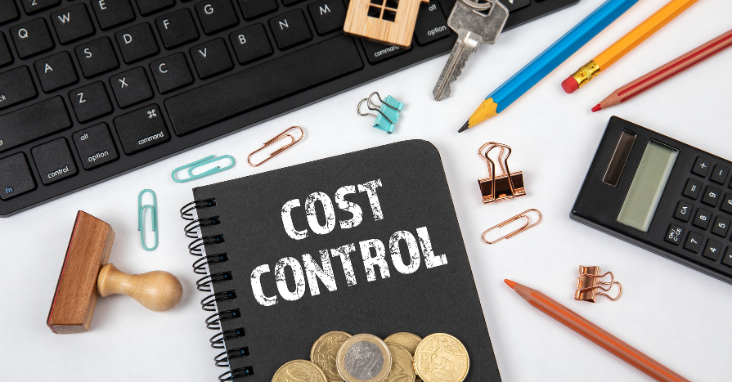
How Can I Use My Variable Cost Per Unit Data to Identify Areas Where I Can Reduce Costs?
Your variable cost per unit data can serve as a valuable tool for identifying potential cost-saving opportunities. Here are a few ways to utilize this data:
Benchmarking: Compare your variable cost per unit to industry standards or competitors. If your costs are higher, it might be time to find ways to become more efficient.
Analyzing cost composition: Understand what components make up your variable costs. Are there any areas where you could negotiate better prices with suppliers or find cheaper alternatives?
Identifying inefficiencies: A rising variable cost per unit might signal inefficiencies in your production process, like waste or overtime. Look for ways to improve your operations and reduce these costs.
Exploring technological solutions: Often, investing in technology can lead to long-term cost savings by automating certain processes and increasing efficiency.
Action Item: Using the variable cost per unit data you’ve been working with, see if you can identify any potential areas for cost reduction. Remember, cost reduction isn’t just about cutting costs—it’s about increasing efficiency and value while maintaining the quality of your products or services. Be mindful of the potential impact of cost-cutting measures on your product quality and customer satisfaction.

What are Some of the Latest Trends in Variable Cost Per Unit Management?
Staying abreast of the latest trends in variable cost per unit management can help you modernize your approach and gain a competitive edge. Here are some current trends to consider:
Digital transformation: Many businesses are investing in advanced accounting and financial software to track and analyze their costs more effectively. Machine learning and AI are also being used to predict cost behavior and identify cost-saving opportunities.
Sustainability and cost management: Businesses are increasingly considering environmental impact in their cost management practices. Reducing waste not only helps the planet but also lowers variable costs.
Supply chain optimization: With the rise of global supply chains, businesses are looking for ways to manage variable costs across borders. This includes seeking cost-effective suppliers and optimizing logistics to minimize costs.
Activity-based costing: Instead of allocating costs based on direct labor or machine hours, many businesses are using activity-based costing to assign costs more accurately based on the specific activities that drive them.
Action Item: Reflect on these trends. Could any of them be relevant or beneficial for your business? Consider how you might adapt your cost management practices in response to these trends. By staying current with the latest practices, you can ensure that your business remains competitive and cost-effective.

Conclusion
Variable cost per unit is a vital concept in cost accounting and financial management. By understanding and tracking it, you can make more informed pricing, production, marketing, and financial planning decisions. Despite the challenges of calculating and managing variable costs, the benefits and insights they provide make them a key tool for successful business operations.
Remember, the process of managing variable costs is not a one-time activity but a continuous process of measuring, monitoring, and adjusting as necessary. By doing so, you can improve efficiency, control costs, enhance profitability, and ultimately drive your business towards sustainable growth.
Action Item: Think about one step you can take right now to improve your understanding or management of variable costs. Maybe it’s calculating your variable cost per unit, setting up a system to track costs, or even exploring new software or trends. Whatever it is, take that step forward and keep on the path of learning and improving. After all, knowledge is power, and in this case, it can also lead to profits!

Frequenty Asked Questions – FAQ
What is the formula for variable cost per unit?
The formula for variable cost per unit is the total variable cost divided by the total quantity or total output produced. Total variable expenses incurred during the production process, including labor costs, material costs, and other costs that vary with the production level, are divided by the total output to find the unit variable cost.
How is unit variable cost related to company’s total costs?
Unit variable cost is an integral part of a company’s total costs. The total costs are the sum of the fixed and variable costs. Fixed costs remain the same regardless of the production level, whereas variable costs change with the output. If the production decreases, the variable costs also decrease.
What are some variable cost examples?
Some of the most common variable costs include labor costs, costs of raw materials, and utilities used in the production process. These costs directly increase or decrease with the level of production or output.
How can a business owner calculate the break-even point?
A business owner can calculate the break-even point using the following formula: Break-even point in units = Total Fixed Costs / (Sales price per unit – Variable Cost per unit). The variable cost per unit is an essential component of this formula.
What are the variable costs needed in a unit formula?
To calculate the variable cost per unit using a unit formula, you need to know the total variable expenses incurred and the total quantity produced. You can then divide the total variable expenses by the total output to find the variable cost per unit.
How is the production level related to variable costs?
The production level is directly related to variable costs. If the production level increases, variable costs also increase and vice versa. For instance, if a company produces more units, it will need more raw materials, leading to an increase in variable costs.
Can the variable costing method help a business grow?
Yes, using variable costing can help a business grow. This method only considers variable costs in product costing, making it easier for a business to evaluate how changes in production levels affect profitability. As the business grows and increases its product line, understanding variable costs per unit can assist in strategic decision-making.
How are unit variable costs applied in real-world scenarios like for Uber?
In real-world scenarios like Uber, the variable costs would include expenses that change based on the number of rides. For instance, Uber pays drivers per ride, so this would be a variable cost. By understanding the variable cost per unit (or per ride, in this case), Uber can better understand its costs and profitability.
How does the variable expense affect a company’s profits?
The variable expense has a direct impact on a company’s profits. When the production level increases, the variable expense also increases, reducing the profit margin per unit. However, the overall profit may still increase if the additional units produced and sold generate enough revenue to cover the increased variable costs.
What is the difference between variable and fixed expense?
A variable expense changes with the level of production. It includes costs such as raw materials and direct labor. On the other hand, a fixed expense remains the same regardless of the number of units produced. Examples of fixed expenses include rent, salaries, and insurance.
How does a break-even analysis use variable expenses?
A break-even analysis is a financial tool used to determine the production level at which total revenue equals total costs, resulting in zero profit. Variable expenses are key to this analysis as they change with the production level. The analysis calculates how many units must be sold to cover both fixed and variable expenses.
How do you calculate the break-even point using variable and fixed expenses?
You can calculate the break-even point using the following formula:
Break-even point in units = Total Fixed Costs / (Sales price per unit – Variable Cost per unit).
The variable cost per unit is calculated by dividing the total variable expenses by the total quantity produced. Fixed costs, which remain the same regardless of the output, are then factored into the equation.
How does variable cost per unit affect the single unit cost?
The variable cost per unit is a significant component of the total cost of a single unit. This is because it includes the costs directly associated with the production of that unit. Any change in variable costs, therefore, impacts the cost of producing a single unit, which can ultimately affect pricing and profitability.
How do fixed costs factor into calculating the break-even point?
Fixed costs, which remain the same regardless of the production level, play a crucial role in calculating the break-even point. The formula for calculating the break-even point is:
Break-even point in units = Total Fixed Costs / (Sales price per unit – Variable Cost per unit).
This means the break-even point is the level of production at which total revenues equal total costs (both fixed and variable). Fixed costs, as a constant, are therefore a critical part of this calculation.
Why do some costs remain fixed when you calculate break-even point?
Some costs remain fixed, meaning they do not change with the level of production or sales. These include costs like rent, salaries, insurance, etc. These costs are considered fixed because they must be paid regardless of how much or how little the company produces or sells. Even at the break-even point, these costs need to be covered by the total revenue to avoid losses.
How does the concept of average variable cost fit into variable cost per unit?
Average variable cost (AVC) is essentially another term for variable cost per unit. It’s calculated by dividing total variable costs by the total quantity of output. This gives the cost per unit of output, or the average cost incurred for each unit produced. This information is crucial for understanding how costs behave at different production levels and for setting pricing strategies. It also plays a crucial role in the break-even analysis as it helps determine the point at which total revenues cover total costs.

